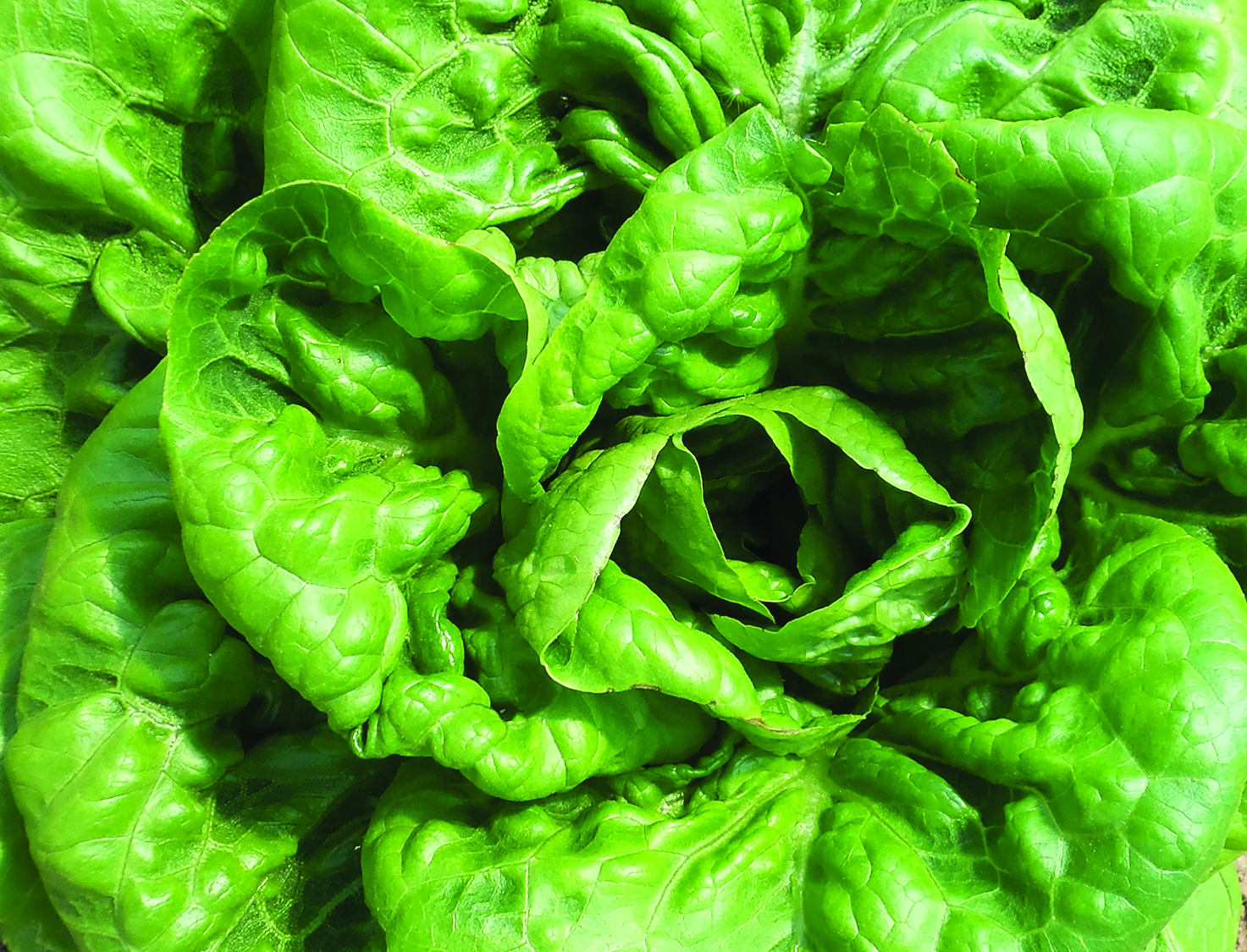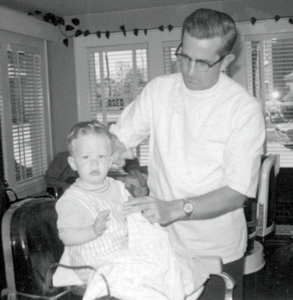Kelly Yeaton included this letter with his donation of ‘Aunt Mae’s Bibb’ lettuce seeds.
‘Aunt Mae’s Bibb’ lettuce checks all the boxes

In 1937, Nestor and Amber Keene acquired a very special Bibb lettuce from Nestor’s Aunt Mae Smith of Millheim, Pennsylvania, who had, in turn, received it from “local folks named Zimmerman who had grown it for decades in Brush Valley.” The brilliant-green lettuce was crisp, crunchy, deep-spined, and excellent for making salads and sandwiches. It was also exceptionally hardy, seemingly unbothered by heat or frost.
The lettuce was so fantastic, in fact, that the couple would grow it not only year after year for the rest of their lives but also share its seeds with patrons of the barber shop Nestor opened in the early 1950s in Boalsburg, Pennsylvania. A 1993 Centre Daily Times article reported that “when the seed cases are formed and dry, Nestor picks them, crushes them in his hand, and pours the contents from one container to another until the seeds separate from the chaff.”

For decades, Nestor kept packets of the appropriately named ‘Aunt Mae’s Bibb’ lettuce by the cash register for customers who requested it. When Nestor retired in the 1980s, his son Robert took over the family barber shop and continued to offer packets of the locally popular lettuce seed.
In 1995, Kelly Yeaton of Pennsylvania donated two seed samples of ‘Aunt Mae’s Bibb’ lettuce to Seed Savers Exchange. One had been grown by Nestor in 1993, the other by Robert a year later.
Yeaton’s donation letter describes the lettuce as a “non-hybrid which seems to have come to light over among the Amish and Mennonite farmers and family of Brush Valley, near Madisonburg, Pennsylvania.”
While Kelly, an Exchange lister, never listed this lettuce, Seed Savers Exchange did—for the first time in 2013. The following year, SSE introduced it in its catalog; it has proved a popular variety ever since.
![letter_donation A typed letter reads the following: June 15, 1995 Seed Savers Exchange Kent Whealy and the Heritage Farm crew: In a previous letter I think I sent a pinch of the lettuce seed, with the clipping explaining [its] history etc. This year I asked for another packet and it just came in, with the sad news that a “natural” seed saver had passed on. Looks to me that we ought to catch the torch that Nestor Keene carried all his married life…Aunt Mae’s Lettuce Seed, a non-hybrid which seems to have come to light over among the Amish [and] Mennonite farmers and family of Brush Valley, near Madisonburg, PA. I have no personal experience with the lettuce, but plainly others have….I have no way of discovering the original source, either. But if Heritage Farm can spare a bit of space for Aunt Mae, and you can drop a line to Amber or her son Robert in Boalsburg to ask if they have any details about Zimmermans, or any other things you’d like to know (before it is literally too late). Anyway, this is some of the latest crop (1994) and its history so far as I know it. I have planted some, but lost the ’93 stock to weather or something. (Lettuce is not my cup of tea.)](https://seedsavers.org/wp-content/uploads/2024/04/letter_donation-1-1600x1027.jpg)
What Is Bibb Lettuce?
Named after John Bibb—a lawyer who developed this variety in Kentucky out of his Frankfort home—Bibb is a tasty, tender, and light butterhead lettuce. While Bibb created this green (originally called “limestone lettuce”) in the 1860s, it wasn’t commercially available until a century later and took decades after that to become popular.
Today, Bibb is one of the most sought-after forms of butterhead lettuce, along with Boston lettuce. Bibb leaves prove smaller and tend to remain light, springy green rather than turn reddish-purple like those of Boston lettuce. All butterhead lettuces have large, loose heads that resemble a blooming rose; the tighter the head, the younger the plant.
How to Grow Lettuce
Lettuce is an ideal crop for beginner growers. Plant seeds in the spring or fall when temperatures are still cool. Direct sow seeds an eighth of an inch deep, one inch apart. Seeds will germinate in a week or two.
Thin plants to six to eight inches apart for butterhead, looseleaf, and romaine varieties and up to 12 inches apart for crisphead varieties. Lettuce can be grown in dense plantings to “cut and come again,” or to full maturity to be harvested once.